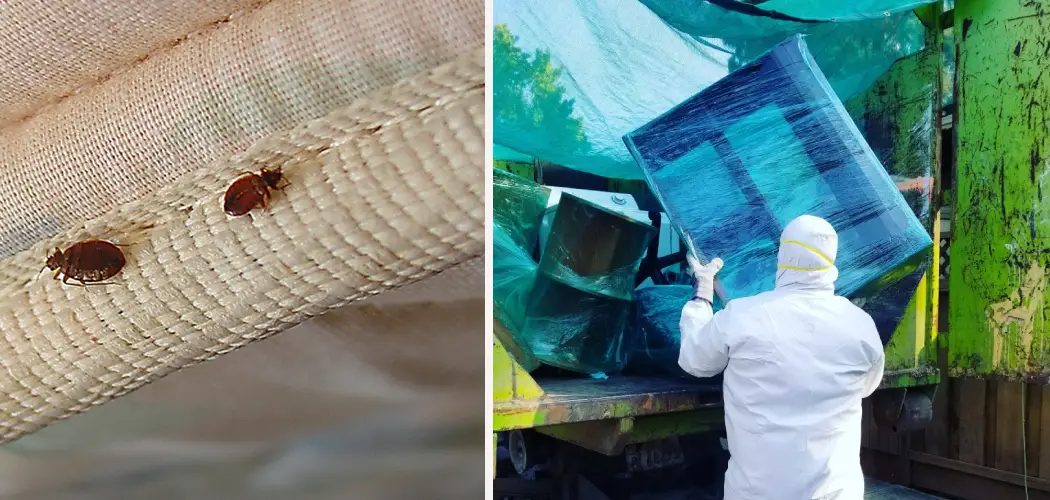Bed bugs are a common problem that can plague any household. These tiny, reddish-brown insects feed on the blood of humans and animals and can easily infest your home without being noticed. One way bed bugs can enter your home is through second-hand furniture. Purchasing used furniture with bed bugs is a surefire way to bring them into your home and cause a major infestation.
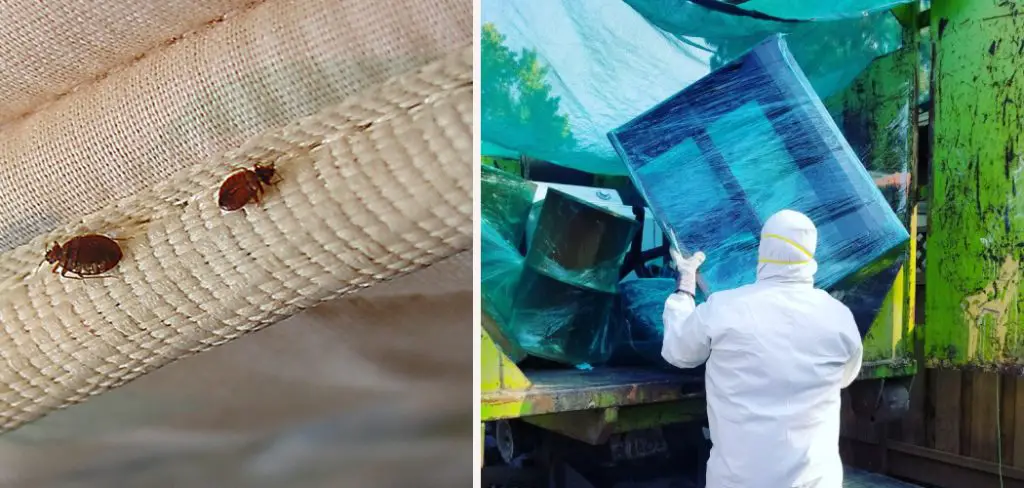
The main advantage of disposing of furniture with bed bugs is that it helps prevent the spread of these pesky insects. By properly disposing of infested furniture, you can stop the infestation from spreading to other areas of your home or building. In this blog post, You will learn in detail how to dispose of furniture with bed bugs.
Step by Step Processes for How to Dispose of Furniture With Bed Bugs
Step 1: Inspect the Furniture
Before disposing of any furniture, it is important to inspect it for bed bugs. Look for live or dead bed bugs, shed skins, dark spots (fecal matter), and eggs. If any of these signs are found, then the furniture is likely infested with bed bugs.
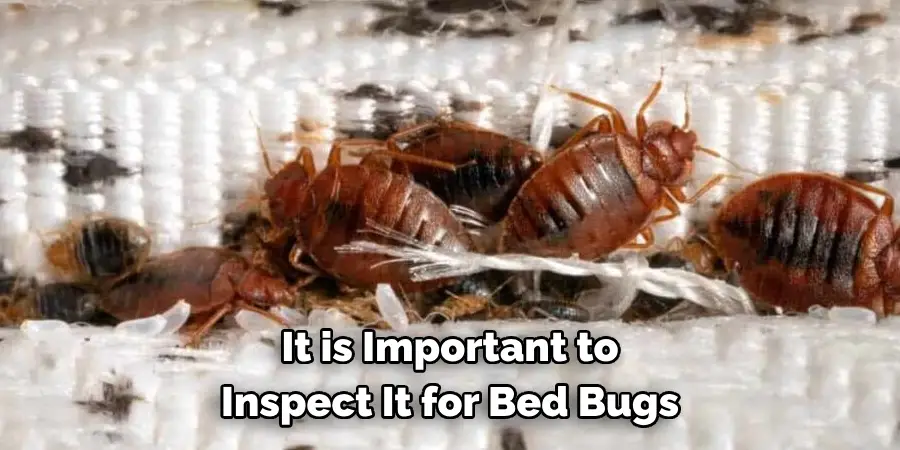
Step 2: Determine if the Furniture can be Treated
The next step is to determine if the furniture can be treated for bed bugs. If there are only a few bed bugs present, then it might be possible to treat and salvage the furniture. However, if the infestation is severe or the furniture is heavily infested, then it may not be worth treating.
Step 3: Seal the Furniture
If you have decided to dispose of the furniture, the next step is to seal it in a plastic bag or wrap. This will prevent any bed bugs from escaping and infesting other areas of your home. Be sure to label the sealed furniture as “infested with bed bugs”. This will warn others not to take the furniture and potentially spread the infestation.
Step 4: Call Your Local Waste Management Service
Check with your local waste management service to see if they have specific guidelines for disposing of furniture with bed bugs. Some areas may require you to schedule a special pickup for infested furniture, while others may allow you to dispose of it in your regular trash.
If you need to transport the furniture to a waste management facility, be sure to do so carefully. Use a sealed vehicle or cover the furniture with plastic to prevent any bed bugs from escaping during transportation.

Step 5: Inform Others
If you are disposing of the furniture in a multi-unit building, be sure to inform your landlord and neighbors about the infestation. This will allow them to take necessary precautions and prevent the spread of bed bugs to other units.
If you have a freezer large enough, you can try freezing the infested furniture at -16°C for 4 days. Similarly, heat treatment can also be effective in killing bed bugs. However, both methods may not guarantee complete eradication of all bed bugs. Consult a professional pest control service before attempting these methods.
Step 6: Disinfect the Area
After disposing of the furniture, it is important to disinfect the surrounding area to remove any potential bed bugs or eggs. Use a vacuum with a HEPA filter and dispose of the vacuum bag afterwards.
Even after disposing of infested furniture, it is important to monitor for any signs of bed bugs in your home. Regularly inspect all furniture and bedding for signs of bed bugs and take necessary measures if an infestation is detected.
Overall, disposing of furniture with bed bugs can be a daunting task, but by following these steps carefully and taking necessary precautions, you can effectively get rid of the infestation and prevent it from spreading further.
Precautions for How to Dispose of Furniture With Bed Bugs
- Make sure to wear gloves, protective eyewear and a respirator before attempting to dispose of furniture with bed bugs. These pests can transfer easily from the furniture onto your skin, clothes or face.
- Seal all open spaces in garbage bags and containers through which bed bugs can escape. Use heavy-duty tape to seal any holes or tear on the bag/container.
- To further secure the bag/container, double bag it to prevent any escapees.
- Use a permanent marker to label the bags/containers as “infected with bed bugs” for safe disposal. This will also ensure that no one else takes it home, thinking they can salvage it.
- Do not dispose of furniture in communal areas such as dumpsters or trash cans. These locations are likely to expose others to bed bugs and create a bigger problem.
- If the furniture is too big or bulky to fit into trash bags, consider wrapping it in plastic sheeting and tape it securely before disposing of it. This will minimize any spillage or escapees during transportation.
- Ensure that you dispose of all parts of the furniture including screws, brackets, and bolts as they can easily harbor bed bugs. Use a Ziploc bag to store these items and label them as “infected – do not open” before disposing of it.
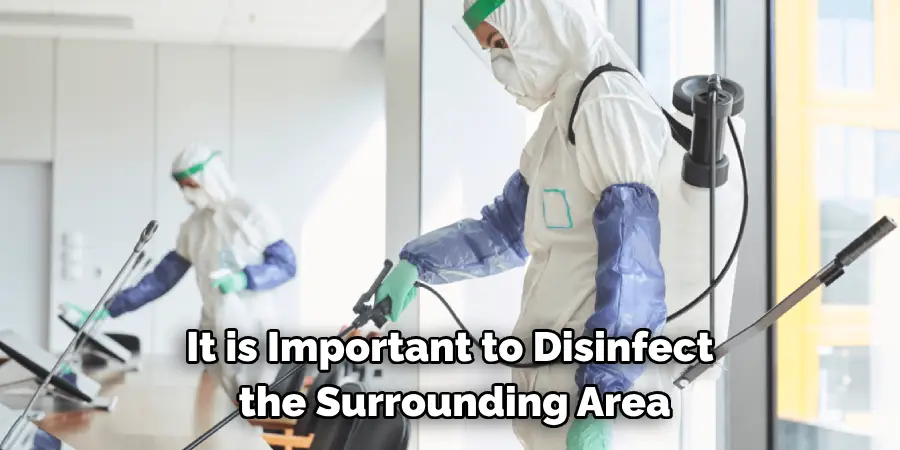
By following these precautions, you can effectively and responsibly dispose of furniture with bed bugs. This will not only prevent the spread of infestations but also ensure the safety and well-being of those around you.
What Are the Health Risks Associated With Disposing of Furniture With Bed Bugs?
The disposal of furniture with bed bugs comes with several health risks that need to be considered. These include:
- Skin irritation: Bed bugs are known to bite humans and can cause skin irritation, redness, and itching. When handling infested furniture, there is a high chance of getting bitten.
- Allergic reactions: Some individuals may develop an allergic reaction to bed bug bites, which can range from mild to severe.
- Breathing difficulties: Bed bugs can also cause breathing difficulties, especially for individuals with asthma or other respiratory issues. This is due to the allergens produced by bed bugs.
- Infections: Scratching bed bug bites can lead to infections, especially if the skin is broken. This can result in further health complications.
It is important to take proper precautions when disposing of furniture with bed bugs to avoid these health risks. Remember to always wear protective gear and handle the furniture carefully to prevent any bites or spillage.
Is Steam Cleaning an Effective Method for Getting Rid of Bed Bugs on Furniture?
The short answer is yes – steam cleaning can be an effective way to kill bed bugs on furniture. However, there are some important considerations to keep in mind before relying solely on this method for bed bug removal. First and foremost, steam cleaning is only effective at killing bed bugs that come into direct contact with the high temperatures produced by the steam. This means that it may not reach all hidden or hard-to-reach areas where bed bugs like to hide, such as inside furniture crevices or deep within mattresses.
It’s important to thoroughly inspect the furniture and treat any potential hiding spots before using steam cleaning as a method of eradication. Another factor to consider is that steam cleaning alone may not completely eliminate a bed bug infestation. While it can effectively kill live bugs, it does not address any eggs or nymphs that may be present. This means that multiple treatments may be necessary for complete eradication. Additionally, steam cleaning can also cause damage to certain types of furniture, such as wood or delicate fabrics. It’s important to test a small and inconspicuous area first before proceeding with steam cleaning the entire piece of furniture.
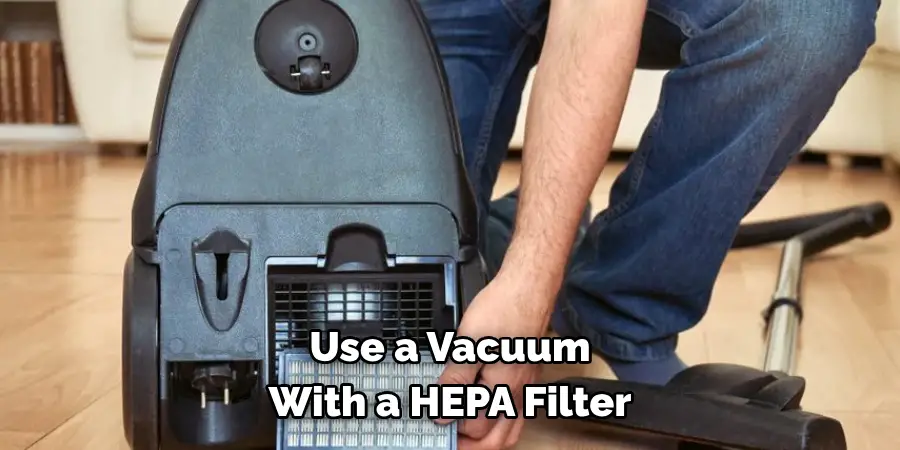
How Can You Prevent Future Infestations When Buying New or Used Furniture?
If you have ever experienced a bed bug infestation, you know how much of a nightmare it can be. These tiny pests not only cause itchy bites and discomfort, but they also reproduce rapidly and spread to different areas of your home. While getting rid of them may seem like the end goal, preventing future infestations should also be a top priority.
One of the most common ways for bed bugs to enter your home is through infested furniture. Whether you’re purchasing new or used furniture, it’s important to take precautions to avoid bringing these unwanted guests into your living space. Here are some tips on how to prevent future infestations when buying new or used furniture:
1. Inspect the Furniture Before Bringing It Home
Before you even consider purchasing furniture, inspect it thoroughly for any signs of bed bugs. Look for live bugs, eggs, or black spots (bed bug excrement) on the surface and within crevices of the furniture. If you find any evidence of infestation, do not purchase the item.
2. Buy from Reputable Sources
When buying used furniture, be cautious of where you are purchasing it from. Avoid buying from garage sales, thrift stores, or other second-hand sources that may not have proper pest control measures in place.
3. Choose Light-Colored Furniture
Bed bugs usually hide in dark crevices and cracks, making them difficult to spot on dark-colored furniture. Opt for light-colored furniture instead, as it will make any signs of infestation more visible.
4. Invest in Protective Covers
Whether you’re buying new or used furniture, it’s a good idea to invest in protective covers for all mattresses, box springs, and pillows. These covers are designed to be bed bug-proof and will prevent any potential infestations.
5. Vacuum Regularly
Vacuuming your furniture regularly can help to remove any bed bugs or eggs that may have made their way into your home. Make sure to vacuum all surfaces, including the seams and crevices of furniture.
6. Use Heat Treatment
If you are buying used furniture, consider using heat treatment before bringing it into your home. This involves placing the furniture in a sealed plastic bag and heating it to a high temperature for a period of time. This will effectively kill any bed bugs or eggs that may be present.
7. Be Vigilant
Even after taking all the necessary precautions, it’s important to remain vigilant and keep an eye out for any signs of bed bugs in your home. If you do suspect an infestation, act quickly to prevent it from spreading.
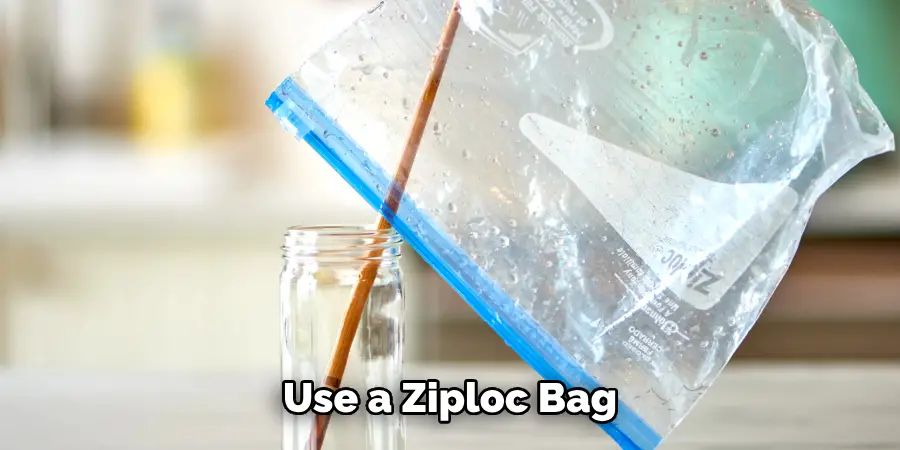
By following these tips, you can greatly reduce the risk of bed bugs entering your home through infested furniture. Prevention is key when it comes to dealing with bed bugs, so take the necessary steps to protect yourself and your home from these unwanted pests.
Conclusion
In conclusion, disposing of furniture infested with bed bugs is a necessary step to prevent these pests from spreading. While there are various methods for disposal, it is important to consider the disadvantages and choose the most effective and environmentally friendly option. One main disadvantage is the cost associated with disposal. If you opt for professional removal services, it can be quite expensive.
However, this cost may be worth it in the long run as it ensures that the bed bugs are completely eradicated. Another disadvantage is the potential harm to the environment. Some methods of disposal, such as burning or dumping furniture, can release harmful chemicals and contribute to pollution. It is important to research and choose a safe and eco-friendly method for disposing of furniture with bed bugs. I hope this article has been beneficial for learning how to dispose of furniture with bed bugs. Make Sure the precautionary measures are followed chronologically.

